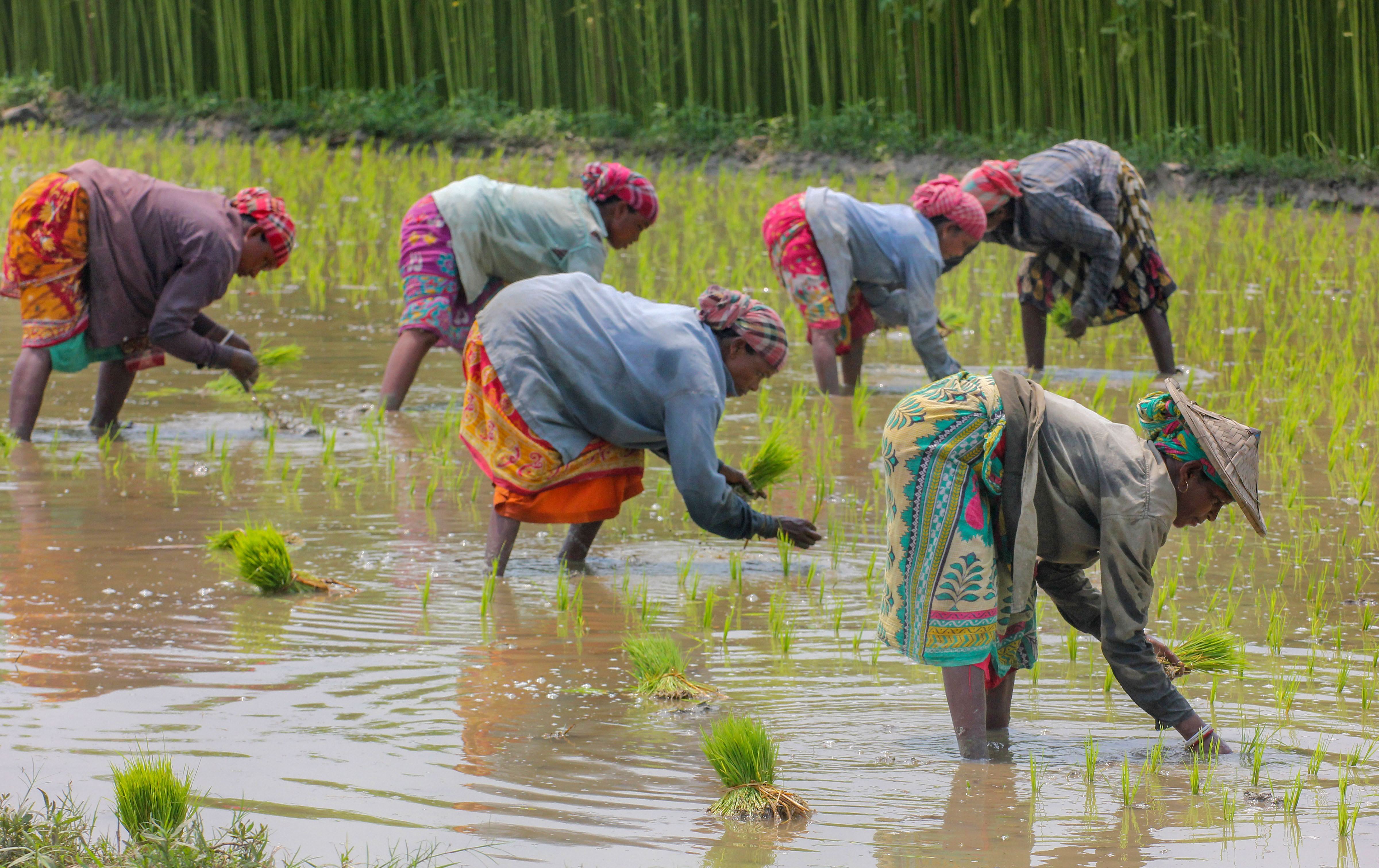
Rice farmers must adopt climate-resilient varieties, practices faster: Expert

Shortening the lifecycle of rice crops, making varieties resistant to emerging diseases, investing them with traits to tolerate submergence, salinity, and drought, and switching from transplanting to direct seeding are some of the strategies that are being adopted in India to adapt rice to climate change.
The country’s farmers need to move faster in this direction to minimise water use in rice cultivation, reduce earth-warming gases produced during traditional rice farming, and cope with extreme weather events that are becoming more frequent, AK Singh, Director, Indian Agricultural Research Institute (IARI), said in a Zoom interview with The Federal.
Singh has specialised in rice breeding, genetics, and molecular breeding. He has also been involved in the development of several popular basmati varieties.

Importance of rice in India
Rice is grown across India on 44 million hectares, compared to 30 million hectares of wheat. It is the most consumed cereal and engages the largest number of farmers. India is also one of the top rice exporters.
Rice is a versatile crop. It can be grown in irrigated conditions, in rainfed lowlands, in areas prone to flooding, and in uplands. But the cultivation of rice in transplanted conditions results in emissions of methane, an earth-warming gas, and overuse of water.
While rice is affected by climate change, it also contributes to it.
Earlier estimates by foreign agencies had put India’s methane emissions from paddy at about 37 million tonnes but studies at IARI showed that it was about 3.25 million tonnes in 2010, as only about 16 per cent of the rice area was continuously flooded and produced the most amount of methane. “But we need to reduce this further,” Singh said, “by shifting to direct seeding.” The other reason for the shift is to reduce water use.
Also read: Palatability, shelf life key factors in boosting millet consumption: Scientist
Transplantation vs seeding
Transplanted rice of 160-day duration needs about 30 irrigations. Initially, to suppress weed growth, the water has to be 5 cm deep. Direct-seeded rice of the same duration needs 22 irrigations, and the water depth is 2 cm, Singh said. Currently, to produce 1 kg of rice via transplantation, it takes 3-4 thousand litres of water. With direct seeding, there is a saving of water up to 35 percent.
Singh said it is a fallacy that rice needs lots of water. Standing water in paddy is meant to supress weed growth. In direct seeding, weedicides do the job. Direct-seeded rice (DSR) also matures a week earlier. That’s the time seedlings need to recover from the shock of transplanting. In DSR fields, water percolates and recharges the aquifers. This cannot happen in transplanted fields, where a crust is formed on the soil surface due to puddling. On the other hand, there is massive evaporation loss.
But varieties suitable for direct seeding have to be developed. IARI has one such project with funding from the Department of Biotechnology. Agronomic practices will have to change; farmers will have to adopt practices techniques like alternative wetting and drying.
Also read: Kharif acreage down with dual wrath of nature — droughts and floods
Hardy varieties needed
Apart from rice varieties tailored for less water use, India also needs varieties that can tolerate submergence, prolonged dry spells, and salinity.
In 2009, a rice variety, Swarna, with the submergence tolerance gene Sub-1, was released. It allows the plant to remain completely submerged in muddy water for seven to 10 days and in clear water for 14 days. The gene was isolated from a variety called FR 13A (FR for flood resistance) derived from an heirloom variety — Dhalputtia — of Odisha. This Sub-1 gene has now been incorporated in many popular rice varieties like Samba.
Since areas prone to flooding are also drought-prone, genes that allow plants to tolerate long dry spells have also been incorporated in plants with submergence-tolerance trait, the examples being CR Dhan 801 and DRR Dhan 50. Singh said traditional rice varieties grown under the Pokhali system of cultivation in Kerala have yielded the Saltol gene, which is being put in varieties meant for fields prone to sea water ingress.
The 46-minute interview with Singh has more on climate adaptation of rice, as well as on improving its nutritional content, particularly on the development of low Glycaemic Index rice that does not create a surge in blood sugar levels. Do tune in.

